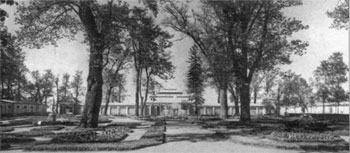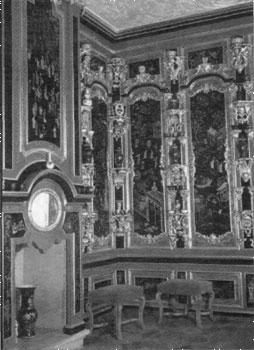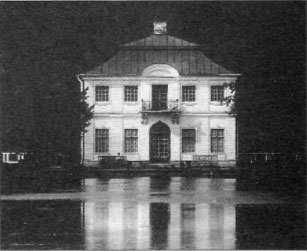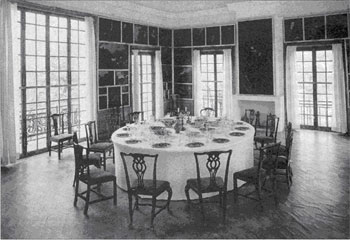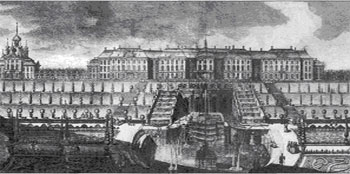Volume 6. The state memorial estate "Peterhof" Peterhof - the oldest grand summer residence of Russian emperors, near St. Petersburg. Since its founding by Peter I in 1705 and at the beginning of XX century there they made parks, erected about twenty palaces, built elegant gardens and park pavilions. The parks of the imperial residence were decorated with more than 150 fountains. Peter I began the famous collection of paintings, the newcomer in the history of Russian art as "the first art gallery" of Russia, collections of furniture, imported from Europe, sculptures, ordered to Italy, china. 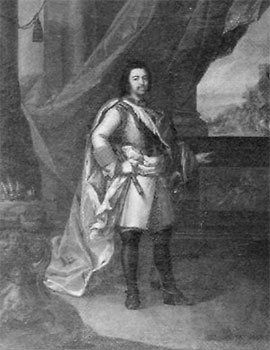
G. Buhgolts. Emperor Peter I. 1760th years 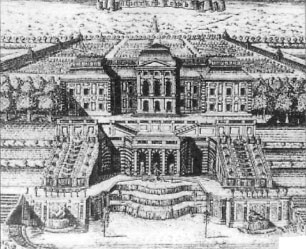
A.I. Rostovtsev. The big cascade and the Upper chambers.1717. An engraving 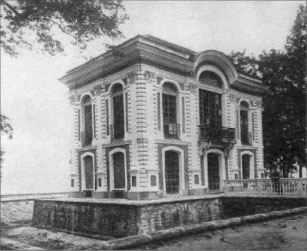
Pavilion the Hermitage After the 1917 revolution more than a dozen palaces and pavilions of the imperial residence became museums of national and Western art of the XVIII - early XX century. In June 22, 1941 the Nazis invaded the Soviet Union. The evacuation of museum exhibits opened in the early days of the war. They managed to take more than two thousand of the more than four thousand items, constituting only the collection of the Grand Palace. Several levels of museum collections were sent to Novosibirsk and Sarapul from Peterhof. The export of some of the exhibits of Peterhof was failed. From the sculptural plasticity of the Grand Cascade fountains, intended to be sent to Leningrad, only the "Perseus" by Shchedrin was taken to St. Isaac's Cathedral. The remaining statues, packaged in boxes for shipment to the rear, had no time to be removed from Leningrad, they spent their blockade at the railroad station Oktyabrskaya Railway. The second part of decor of the Grand Cascade was hidden under the Grand Palace. The Nazis went to Peterhof in September 23, 1941. On the third day after the occupation all the residents were evicted from Peterhof. That’s why there are no witnesses of the destruction of the city; there is no information on stolen museum items. Almost all the sculpture that was located in a tunnel in the ground in the Lower Park, as well as exported to Leningrad survived. Left on the spot Peter bas stages cascade mascarones of the channel and the largest figures - Samson, Triton, Neva, Volkhov - disappeared. The objects of decorative art, hidden in the basement of the Grand Palace, partly damaged by the fire in the building, and for the most part were looted. Already in 1944, after the removal of the Leningrad blockade, the museum began the search for things along the way of the retreat of Nazi troops - in Estonia, Latvia, and later in Germany. During the war, Peterhof lost more rarities than any other museum-reserve on the outskirts of Leningrad. From lost more than 16,000 items only about two hundred and fifty were found. The sculptural group of the fountain Neptune was discovered in Nuremberg. The items from the service of Catherine II by D. Wedgwood - in the Baltics. From Berlin the painting "Poultry-yard" by A. van Ohlin came back, which once was acquired by order of Peter I specifically for Peterhof. The search for the missing items from the Peterhof museum continues. In 1992 the picture “Kaiser Wilhelm I to Paris" from the Cabinet of Alexander II of the Farm palace returned from Berlin. In the Baltics "flashed" the canvas by F. Kruger - the portrait of Grand Duke Konstantin Nikolayevich of the Cabinet of Nicholas I in the cottage. Unfortunately, the portrait could not be bought.
|
|
|
  |
 |
 |
 |
|
| © 2006—2024 Development and support by Central computation office of the Ministry of Cultural Affairs of the Russian Federation | |
|




